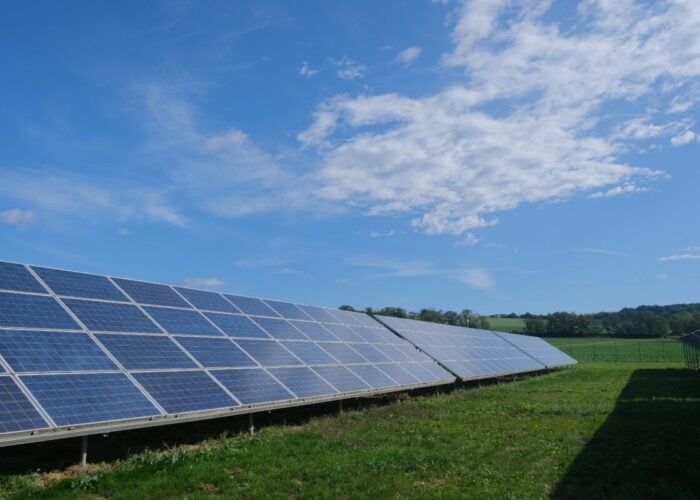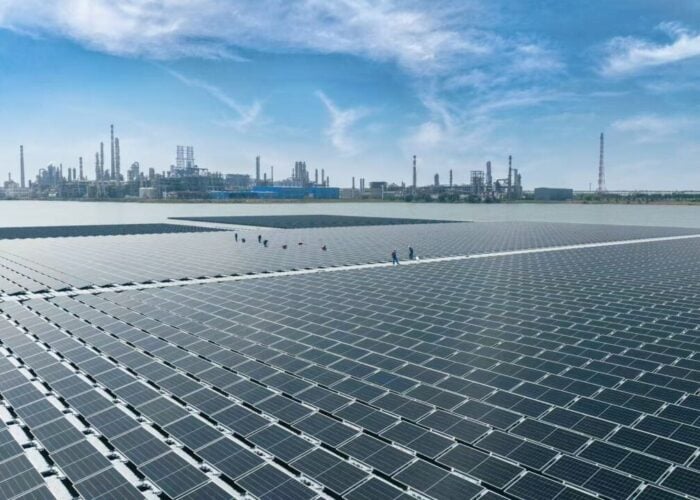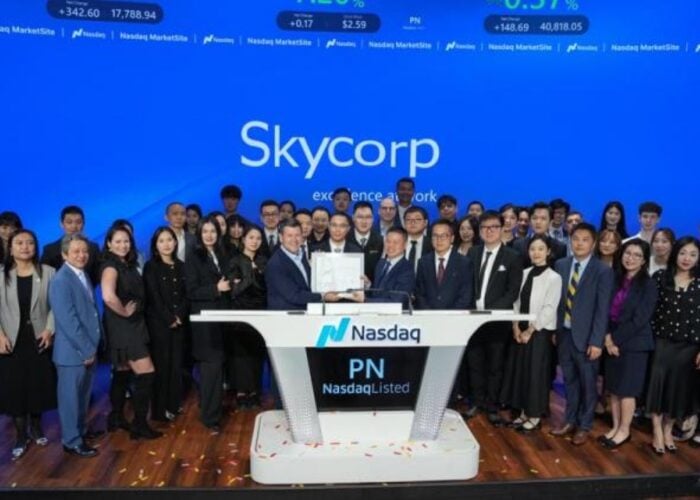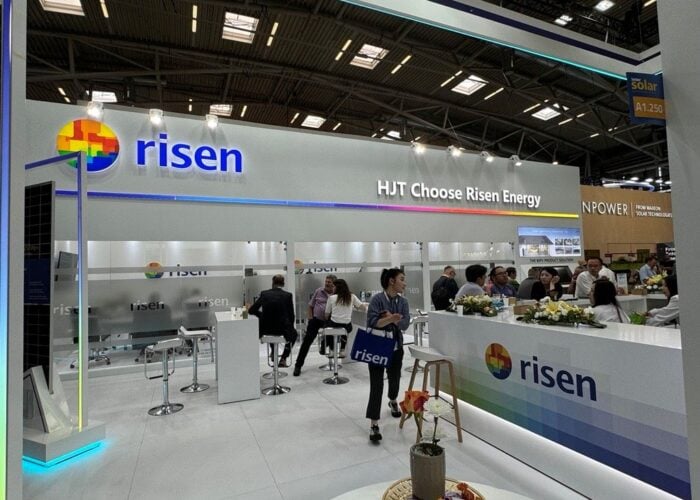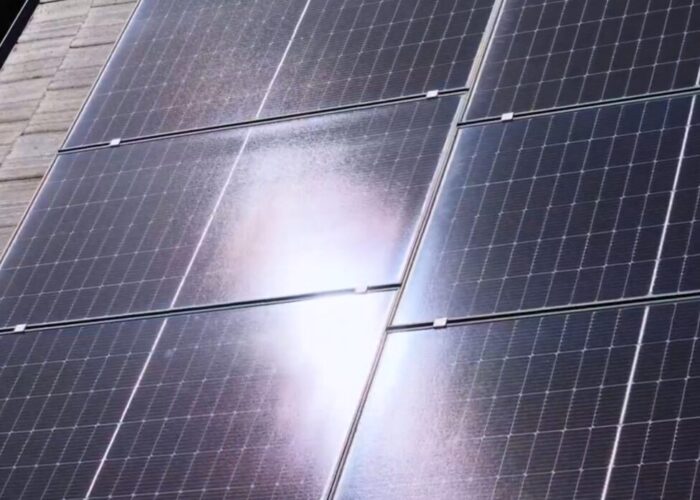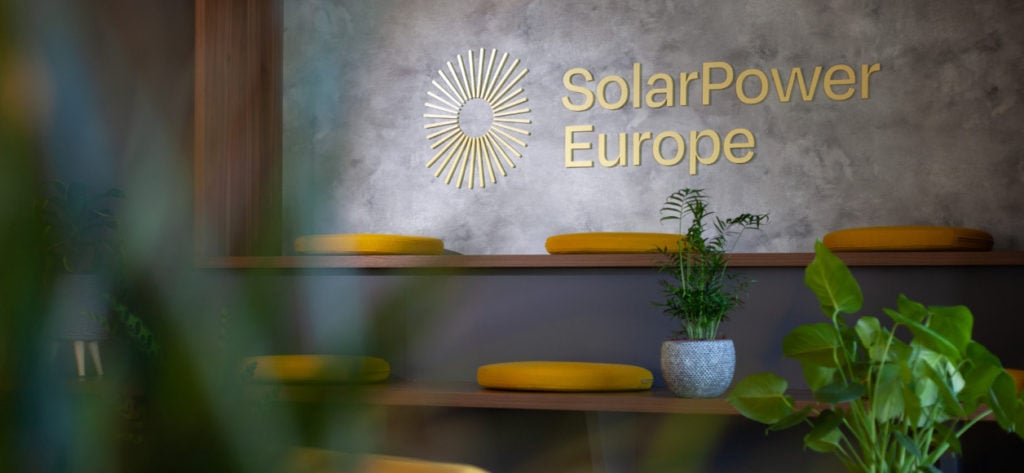
In January, the US Department of Homeland Security (DHS) added a subsidiary of Chinese solar manufacturer, JA Solar, to its Uyghur Forced Labor Prevention Act (UFLPA) entity list. Europe’s Solar Stewardship Initiative (SSI) – a body founded by trade organisations SolarPower Europe and Solar Energy UK – suspended JA Solar’s membership and launched its own investigation.
Within two weeks, the SSI reinstated JA Solar after it found that the production facility in question had ceased operations in 2018.
Unlock unlimited access for 12 whole months of distinctive global analysis
Photovoltaics International is now included.
- Regular insight and analysis of the industry’s biggest developments
- In-depth interviews with the industry’s leading figures
- Unlimited digital access to the PV Tech Power journal catalogue
- Unlimited digital access to the Photovoltaics International journal catalogue
- Access to more than 1,000 technical papers
- Discounts on Solar Media’s portfolio of events, in-person and virtual
The SSI has so far certified two Chinese manufacturing facilities under its ESG Standard, which is distinct from the Supply Traceability Standard, and both facilities are owned by Trinasolar. To be fully certified, a company has to comply with and pass both ESG and Supply Traceability audits.
Prior to these developments, PV Tech Premium interviewed Alexia Ruvoletto, head of the secretariat of the SSI, about the organisation’s Supply Traceability Standard, which it launched in December, the involvement of members in setting SSI standards and transparency in the upstream components of the solar supply chain. Since our conversation, Ruvoletto has announced her resignation from the SSI.
‘Enabling greenwashing’?
“Besides consulting, of course, with SSI members, we open a public consultation and we test the standard on the ground with volunteer sites,” says Ruvoletto.
The involvement of manufacturers in the design of the SSI standards has raised eyebrows in some quarters of the solar industry and led to questions over how independent the auditing and the process itself can be.
Jens Holm, policy director at the European Solar Manufacturing Council (ESMC) tells PV Tech Premium that: “Many of the big Chinese manufacturers are leading parts of SSI, which undermines its credibility.”
Indeed, JinkoSolar, Trinasolar, Canadian Solar, Astronergy and (now reinstated) JA Solar are all members of the SSI and prominent paying members of its founding organisation, SolarPower Europe.
When asked about this, Ruvoletto says the involvement of manufacturers in establishing the standard makes it all the more practicable and realistic: “I would say that it makes it more implementable on the ground. The strength of this initiative is that of consulting with all the stakeholders that have a direct interest in this process.
“A standard which is up in the air without having knowledge of how complex the supply chain is runs the risk of staying on paper. You could have something that is wonderful but then is not really effective.”
She also points out that the audits themselves are conducted by third parties – in the case of Trinasolar’s ESG certification, German technical institution TÜV SÜD conducted the audits. She tells us the auditing companies have to comply with standards set by the International Organisation for Standardization (ISO) in order to conduct site visits: 17065, ‘Requirements for bodies certifying products, processes and services’ and ISO 17021, ‘Requirements for bodies providing audit and certification of management systems’.
While it might be pragmatic, there will naturally be suspicions about an auditing standard that was co-created with the companies it is supposed to audit.
The SSI is not a government agency and relies on companies voluntarily submitting themselves to audits. Supporters of the scheme say that it harnesses accountability within the industry and can create a base level of sustainable supply between its members, which encompasses both manufacturers and companies which buy modules.
Critics, like the ESMC, say the scheme “risks enabling greenwashing”.
The supply traceability standard
Silicon material in solar modules goes from quartz mining to the production of metallurgical-grade silicon (MGS), then polysilicon production, before being formed into ingots, cut into wafers, layered into cells, and assembled into modules.
The SSI’s Supply Traceability Standard purports to trace silicon material from the quartz mine to the solar module; however, it cannot physically inspect facilities beyond those submitted by its members. The quartz mines and polysilicon production sites that will supply any given module manufacturing facility – if not owned by the member company itself – are under no obligation to be inspected.
So the traceability operations of SSI members become the focus.
“The audit will be site-specific, but they will verify that the site has a system to trace all the materials up to the [quartz] mine,” Ruvoletto says. “And, basically, it depends on the maturity of the traceability system. We require minimum visibility up to polysilicon for the bronze level—so they will have to demonstrate that they have visibility and that they know exactly where the materials come from, up to polysilicon.”
The silver level requires visibility up to metallurgical silicon production and the gold level calls for transparency up to the quartz mine. The SSI intends to recruit an SSI member or an “SSI-approved supplier” at “every segment of the value chain”, Ruvoletto says, but currently the system relies on the strength of manufacturers’ own traceability schemes.
There are some potential issues here.
Upstream supply visibility
The ongoing allegations of state-sponsored forced labour centring on China’s Xinjiang Uyghur Autonomous Region (XUAR) are the issue de rigueur when discussing solar supply chain traceability—and not without reason. However, industry opinion is split over how much the major solar manufacturers are still directly exposed to these practices.
China’s grid is also largely coal-powered. This raises questions over the carbon footprint of products leaving its borders for Europe and elsewhere, where sustainability standards are often tighter. However, once again, a growing number of manufacturing facilities directly run by major solar producers are seeking sustainability and carbon emissions accreditation.
But the earliest parts of the supply chain are harder to pin down.
The 2023 ‘Over-Exposed’ report from Sheffield Hallam University into Uyghur forced labour in solar supply found particularly high rates of “unknown producers” at the MGS and polysilicon level, as well as the potential for contamination of “clean” MGS and polysilicon supply with questionable product.
Moreover, a 2025 report from the International Labour Organization (ILO) – a UN agency focused on international labour standards – identified “increased cross-provincial labour transfers” from the XUAR to other areas of China “in recent years”, as “surplus” Uyghur agricultural workers are transferred to industrial operations. The report specifically referenced “industries such as the processing of raw materials for the production of solar panels, batteries and other vehicle parts”.
In this context, the SSI’s reliance on the traceability reporting of its solar manufacturing members seems far from watertight. Moreover, the EU’s forced labour ban and supply chain due diligence directive are not set to come into force until 2027.
“Material which was made with environmental negligence or a violation of human rights is just not possible for a company that signs up to the SSI,” says Ruvoletto, when asked about the lack of visibility that SSI auditors have in the upper parts of their members’ supply chains. “I mean, obviously, it’s theoretically possible, but if we hear anything of this sort or receive a complaint then we have means to act.”
And indeed, those means were enacted when JA Solar’s membership was suspended following the US government investigation.
The ESMC’s Holm adds: “We do not recommend our members to use SSI since it fails to address the critical issues such as forced labour, human rights violations, and certification integrity.
“Without stronger guidance on high-risk sourcing, like from the Xinjiang province where forced labour is widespread and stricter certification criteria, the SSI initiative risks enabling greenwashing rather than genuine accountability.”
Currently, the SSI requires its members to have two sites audited to receive the ESG or Supply Traceability certification. Ruvoletto says there is an “expectation” for this number to increase with time and that companies should implement “a plan for themselves” for expanding their supply visibility and certification.
“For us,” she says, “the long-term vision is that we need to have products certified so that there is an unbroken chain of custody from mine to module.”
‘Uncertified doesn’t mean illegal’
The SSI Supply Traceability Standard explicitly addresses material mixing, where different batches of material, usually polysilicon, can be mixed with one another in the production process.
It says: “Certified and non-certified material shall not be mixed if the facility wishes to make a claim about these certified products.”
It continues: facilities must “identify each point at which there is an opportunity for the certified material in its custody to become mixed with non-eligible and/or non-certified material.”
From this wording, it is unclear whether a manufacturer would be able to produce certified and non-certified material in the same facility. Ruvoletto says that in signing up for SSI membership, a company takes on “commitments” to uphold its principles and standards across all operations. The SSI cannot actively enforce these principles outside of the specific facilities they have been invited to audit.
That leaves the door open for supply bifurcation, where a company produces a “clean” supply chain for markets like the US or Europe and operates another, less visible, operation at other facilities for sale to another market. This is not to say that SSI member companies are operating like this, but the standard cannot prevent them from doing so.
“To clarify, uncertified doesn’t mean illegal,” Ruvoletto says, “it simply means it hasn’t gone through the [auditing] process. If [material is] unaudited then you don’t know what it is, but that’s the state of the market right now. You don’t know anything at the moment.
“I appreciate it’s complicated, but unfortunately reality is complicated. At a site, you can have material coming from anywhere, literally. Part of the production can be outsourced to other companies … that’s why we need to have segregation and control over the material.”

